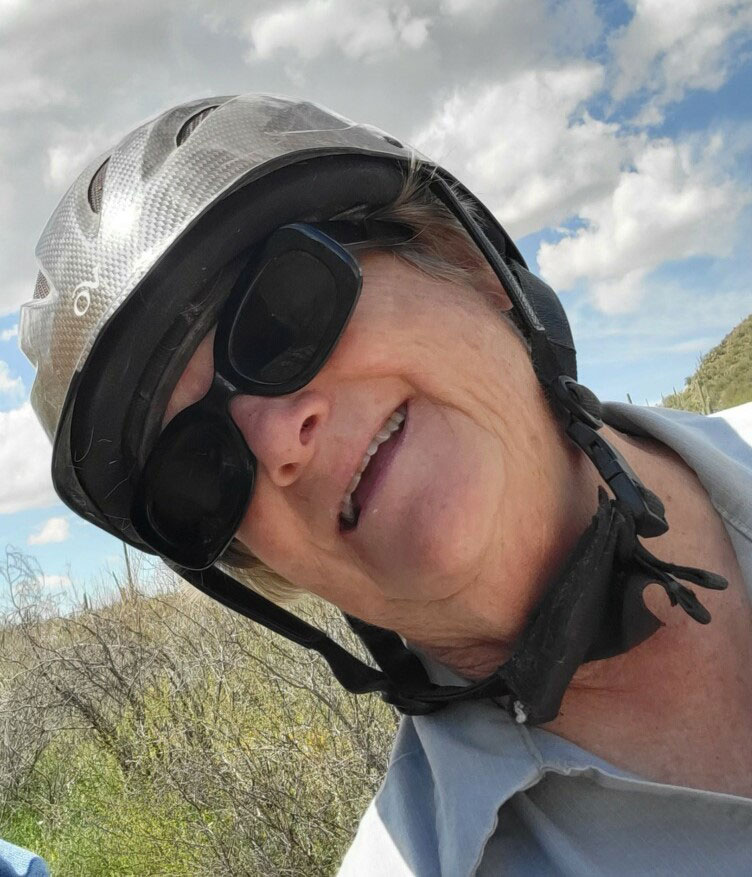Diary of a Late-in-Life Equestrian: Episode 2
One of the big debates in the pleasure horseback riding world is the wearing of helmets. Some riders never wear helmets, some only when riding an unpredictable or possibly dangerous horse (I guess climbing on top of a thousand-pound prey animal isn’t always unpredictable or dangerous), and those who always wear helmets. I’m in the latter group – I always wear a helmet. I know I need a functioning brain, and I believe in the theory of gravity. There’s also the fact that two masses can’t occupy the same space simultaneously, i.e., my head will not dent the ground.
I have a helmet for riding my bicycle, but equestrian helmets are different. I expected them to be similar since they involve high-speed forward motion impacts. However, equestrian helmets cover more of the skull, protecting more of the lower portion and back of the head. Riders fall off horses in all directions, so having the entire head protected is useful. In addition, horse riding helmets are designed to sustain much harder impacts, such as a fall from the height of a horse or a kick to the head; bicyclists tend to be closer to the ground and moving forward. Bicycle helmets are designed to protect the top and front of the head.

A friend and I went on a commercial horseback ride in FL. Neither of us had packed our riding helmets, but I did have two bike helmets in the house. We took those along, thinking they were better than nothing. When we asked to wear the helmets, the owner said, oh no, those won’t do you any good. We’ll give you riding helmets. And then she forgot. We really wanted some protection on our heads. Ineffective bike helmets are not.
The helmet may have vents, which are very helpful in the hot Arizona sun. But these slats can catch the branches. The thin, knobby ends hook into the slots and try to yank the helmet and person off the horse. Fortunately, the strap holds on tight, and hopefully, the head is stronger than the branch… usually.
Many equestrian competitors have helmets covered with bling or looking like fancy dresses. However, for recreational riders, some helmets are decorated like cowboy hats. I had a friend create a fancy band to go over the thick protective area. I selected some colorful turtle-themed material, and she did a great job.
Now that my head is protected, it’s time to ride a horse. Before every lesson, I would brush the horse, pick her feet, and put on the bareback pad and the bridle. However, before mounting, I would walk the horse around the arena. This served many purposes. It warmed up the horse and loosened her joints and mine, but most importantly, it allowed me to determine if there was anything scary for the horse before the lesson. Horses are prey animals that prefer to run first and then ask questions later. If another horse runs in fear, all the other horses join in. Better safe than sorry, as the saying goes. This behavior happens whether a person is on top of the horse or not. This proved very valuable when a pair of mountain lions spent winter in the neighborhood. More on this later. If the horse had an issue with an area, we’d avoid it during the lesson. After all, the student is holding on with only her seat and legs, which aren’t that strong yet.
However, if I slip or bounce off, my head is protected! I like my head, particularly intact. I always wear my helmet, stylish or not.
Stay up-to-date with my Equestrian tales: Read episode one.
To learn about our latest science-based children’s books and workbooks, to read our latest blog posts about reptiles, birds, cats, and gardening, in a variety of locations, and about how the books come to be, what inspires an author to write, and many more interesting aspects of the publishing business, fill in the box below and we will add you to our email list.
Thank you!





